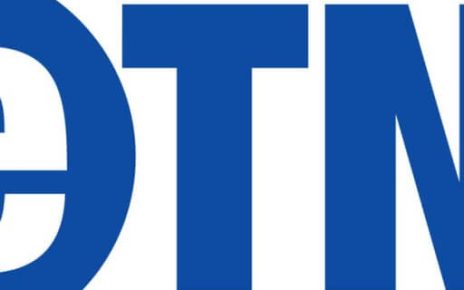Today we are invaded by KPIs, ratios and data that show the hotel’s performance, revealing our strategies. They are indispensable to be able to adjust optimization, but it was not always like that. In the early days of Revenue Management at the beginning of the 21st century, we focused on obtaining any data that could support our strategies.
Revenue Management was just starting out in an environment with limited systems. We were looking for indicators that would help us predict customer behavior.
We knew that anticipation was crucial in order to maximize revenue. We needed to get all the data that was available to us. It was not enough to know when the booking was made; we needed to know why, at what rate, what day of the week, and the detailed impact of demand on the booking curve.
We started by segmenting the demand, even adding codes within each segment that allowed us to drill down and cross-reference the booked rate with the sales channel. Gradually, as we got to grips with Excel reports, RMS emerged, leading to the current flood of data.
Do We Use of the Data We Have Properly?
If in Revenue Management we say that the only thing that is constant is change, it is precisely because of the variations we have in the behavior of demand and its optimization, creating sawtooths.
A key task is to be able to read between numbers and manage the messages contained in the data. It is crucial to isolate the days that show abnormal behavior and focus on trends.
We should not react impulsively because a particular ratio is bad in a very short period of time. From experience, we should first follow up on those ratios to identify opportunities and see if trends are consolidating.
Sometimes we have a large collection of KPIs and ratios that are not so commonly used in our daily operations. For example, it is all very well to have the average stay data and RevPar by room type or even by market segment with variations, but all this information is useless if we do not act accordingly.
Undoubtedly, we are navigating in an ocean of data, with an infinity of numbers, variations and sometimes contradictions. I say this because the same data shows up differently depending on how we look at it, in absolute values or as a percentage.
A very optimistic person can deduce that the result of a new campaign has increased 100% and be very satisfied with it. If we only look at this figure we consider that it is the consequence of a successful campaign, but, if we analyze its absolute value we have gone from selling 5 rooms to selling 10, transforming that 100% into only 5 more rooms.
It is true that we do not have ratios for everything and that is why we must always think globally, since perhaps the success of this campaign lies in an increase in visibility to the point of obtaining an additional volume of bookings through indirect channels.
Yes, it is no longer enough just to obtain the data, it is necessary to consider them in the context of a global vision and never in isolation.
Urgent, Important and Necessary Data
In the same way that we have to manage and differentiate between urgent and important tasks in our daily lives, we need to do the same regarding hotel’s performance.
Urgent data are those that, as soon as they are obtained, generate an immediate action. For example, if we have 70% occupancy in the lowest category on a day when the indicators consider a potential full house, we must close the channels that give us lower performance as soon as possible and do it urgently in order to optimize inventory.
On the other hand, important data are the indicators that do not require an immediate and urgent reaction, but we need them to establish the necessary changes in strategy.
These are key variables, for example, the booking curve, pick-up trend or other indicators that require a consensual action in the short term.
And finally, necessary data are KPIs and ratios, which are not used on a day-to-day basis, but measure the hotel’s performance over a considerable period of time.
They mark the evolution of trends with long-term impact. For example, data on the nationality of our customers or market niches that we cannot change from one day to the next, but can be considered for a future strategy change.
These data are therefore necessary to make a future strategic plan, influencing our objectives.
Not attending to an immediate operative is so necessary, they are the indicators that guide the overall strategy of the hotel. From Revenue Management we must collect these relevant data, contrast them, validate them and focus on those that directly impact the financial results of the hotel proposing changes.
What Important Data Should We Consider?
Progress reports: These provide us with information on the previous year or referenced period, marking trends and changes in Mix segmentation. We must focus on the weakest segments, analyze the reason and activate surgical actions aimed at improving the segments that show the greatest weakness, always avoiding general actions.
Pricing: Positioning data against our competitors, verifying that our price is consistent with our quality and ranking in the market. We usually focus on the “Booking window” period where the pick-up is concentrated.
It is also important in the pricing reports to study the price variations that competitors have had to try to understand their strategy. If we have an RMS with price recommendations, it is always good to share this data and analyze it based on the competitor’s price changes.
Forecast: Review conscientiously the BOB (Business On the Books) data, which indicates the actual performance of the hotel. Based on this data and its variations with a previous period, we must update the forecast marking the current trend, but not before establishing corrective measures.
We look for the risks and opportunities we have to achieve our objectives. An accurate forecast contributes to the organization of the different departments, avoiding added costs and therefore has a direct impact on the optimization of the GOP.
Market Share: With this market data we analyze the hotel’s performance compared to the competition. We must look for the ideal balance between occupancy and ADR to maximize RevPAR and verify which is the trend of the competitive group with the previous year, comparing it with our trend. Not always the market trend is the same as the hotel trend.
Potential Sell-Out days: We focus on future peak occupancy data and potential sell-out days. Anticipation by establishing restrictions will positively impact RevPAR, facilitating the most profitable demand to flow to the lower part of the booking funnel.
Groups: We analyze the data we have on groups, requests, and impact on Pace and we will review the strategy based on possible changes in demand. It is key to analyze the contribution and displacement data generated by each group to determine if the group contributes to the overall hotel strategy.
Total RM: Finally, we should review the F&B ratios for opportunities, at least “Capture Rate” and “Average Check” per restaurant. We should come up with strategies or ideas that generate additional income, promotions, flexible dining packages, etc.
We have the consumption information of our customers, let’s use it to create actions that increase revenues. It should be noted that, in the world of data, small independent hotels do not have systems that enable them to obtain additional information.
However, it should at least be possible to have indications of the progress of the business, identifying periods of high and low demand in order to implement certain actions.
We currently have an infinite amount of data at our disposal. It is necessary to always consider them in a global context by analyzing trends. Having verified data is always good, even if it is negative because it allows us to take corrective measures for the sake of better optimization.




